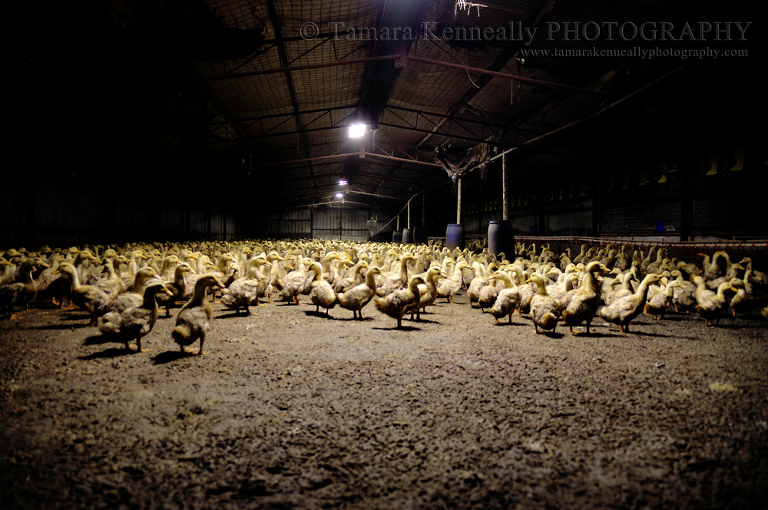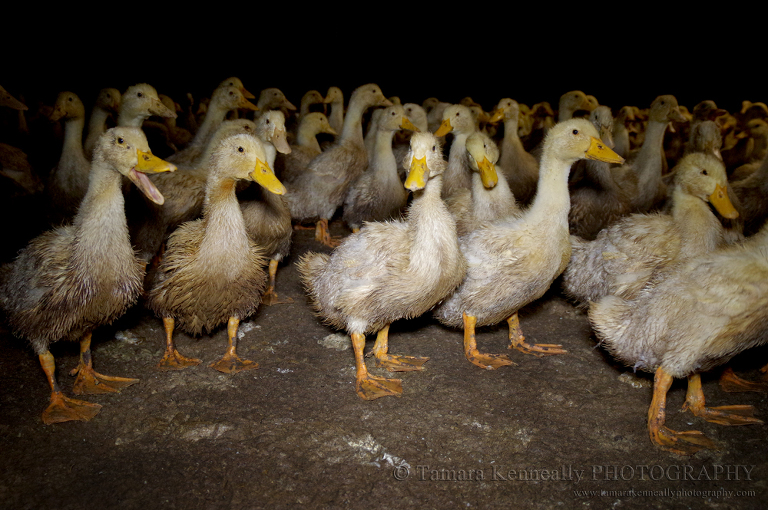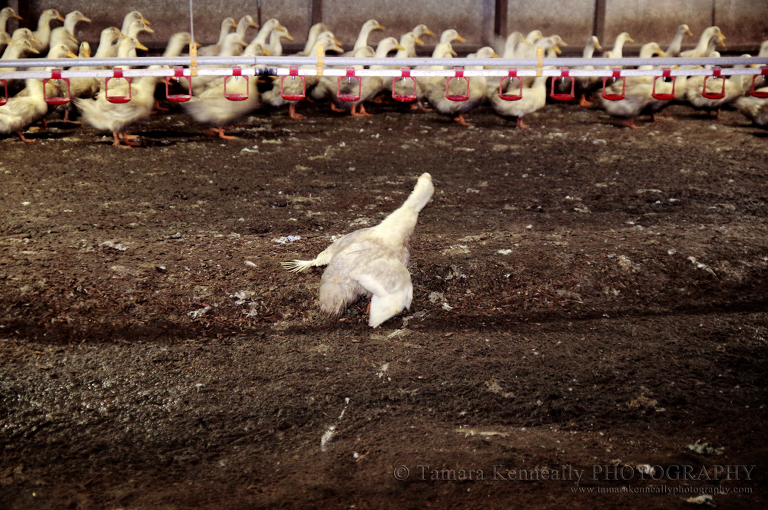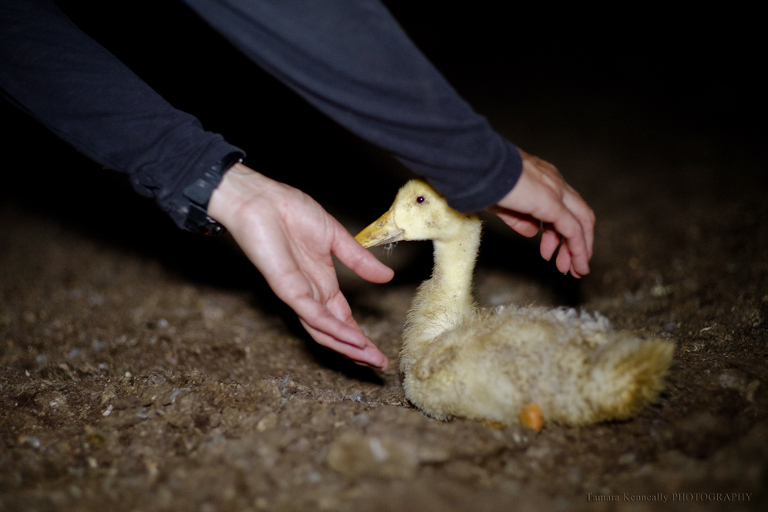When you think of ducks, you automatically think of water. There is a reason for that. Ducks and water go hand in hand. Ducks are an aquatic bird. Their need for water to swim in and bathe in as it is essential for their health and happiness. Duck farming denies ducks of any pools of water to swim in or clean themselves in. Ducks are intensively farmed in sheds and are selectively bred to grow as fast as possible in the smallest amount of time possible. Sheds are not cleaned out until the ducks are sent to slaughter, which is nine weeks from hatching to slaughter weight. Anyone who knows ducks is aware that their waste matter is much more than a chicken’s and the sheds fill up incredibly quickly with duck manure on the floor of the sheds. Ducks walk, live and sleep on manure caked floors that can be more than half a metre thick.
.jpg)
.jpg)
The Australian duck industry slaughters over 8 million ducks for their meat annually and the industry is worth approximately $100 million a year. The Australian Poultry Cooperative Research Centre reports that duck meat production has been increasing at the rate of over five percent per year. Most duck farms in Australia house roughly 50,000 ducks in one farm, but there are certain larger farms that house between 50,000 – 100,000 ducks at any one time.
.jpg)
.jpg)
Pekin ducks are the breed of choice for duck farmers wanting to profit off duck’s bodies. Throughout the industry, they are known as “broiler ducks” and are farmed just like “broiler chickens”.
.jpg)
For the nine weeks they are alive, ducks are kept locked in a shed. They never see the sky or the earth. They never get to immerse their heads, let alone their bodies, in water. They are forced to stand or sit the entire time (ducks bodies are made to swim, prolonged standing and use of their legs holding up their large bodies puts incredibly strain on their legs). They live on mounds of manure.
.jpg)
Whilst visiting the particular duck farm in these images in Victoria, Australia (which is labelled as “free range”), when I first entered the shed, these beautiful ducks ran in terror from me. I proceeded to crouch down on the manure filled floor. I sat there for ten minutes and decided to make my energy as balanced and as calm as possible, and then the loveliest thing happened. Ten thousand ducks all decided that I might be ok. They decided that I wasn’t a threat and they walked up to me and surrounded me. Some talked to me and some just stared. These beautiful young ducks ( just babies, but so huge) were completey covered in duck manure. Their bodies were just caked in it because they couldn’t escape it. They are forced to live in it.
.jpg)
This is the reality for these lovely, aquatic birds. This is what they go through for you to eat their flesh. Nine weeks of hell, living in their own manure, never seeing the light of day, never being able to swim and then being roughly chased, picked up, thrown into a truck, sent to the abattoir and slaughtered.
.jpg)
Whilst at this farm in 2014, I took three ducklings away with me. They were about three weeks old but really quite big for their age. I took them to Lefty’s Place and now they are huge, happy ducks who relish in swimming in their water all day long.
.jpg)
Their names are Templeton, Fern and Charlotte and they are free for the rest of their lives. They are the lucky ones.
.jpg)
In 2018, I visited a duck farm once again and took three ducklings with me – Legolas, Merry and Pippin.
.jpg)
* This series is an ongoing work in progress
Please don’t use my images without permission. All images are Copyright Tamara Kenneally




